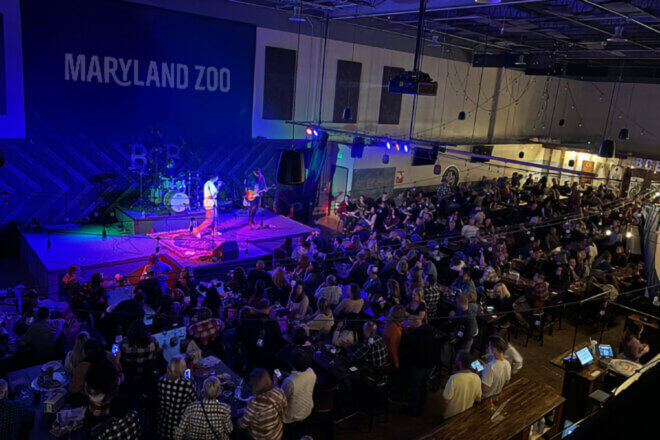BALTIMORE — The Maryland Zoo in Baltimore is happy to announce the arrival of two new okapi (oh-KAH-pee), to its Giraffe House. The male okapi, half brothers Askari (ahz-kar-ee) and Magani (mah-gah-nee), arrived on Tuesday, October 18, 2011, from The Dallas Zoo. Askari is almost two-years-old, while Magani is one.
“The two arrived in fine shape after their 16-hour ride from Dallas to Baltimore,” said Mike McClure, general curator at The Maryland Zoo in Baltimore. “They are now exploring their new indoor space, where they will be quarantined for 30 days.” All animals arriving at the Zoo spend an average of 30 days in quarantine while they undergo veterinary exams to ensure that they are healthy. “We are lucky that in this case, the okapi will be in quarantine in the Giraffe House, where visitors will be able to see them beginning today, Friday, Oct 21st,” said McClure. “They are very interesting animals, and guests will be able to see their unusual body markings up-close during this time.”
Okapi (Okapia johnstoni) are native to the forests of the Democratic Republic of Congo and have been called “the short-necked giraffe of Africa.” Okapi have a short coat that is dark reddish-brown with white stripes on their hind end and front upper legs, and white ankles on their lower legs. The stripes help okapi blend into the shadows of the forest and make them very difficult to see, even when they are only a few feet away. They have longer front legs than rear legs, and they have relatively long necks. These features are similar to those of okapis’ nearest relative, the giraffe. Okapi also have a long, prehensile tongue like the giraffe.
Okapi were ‘discovered’ by scientists around 1900, but the animal had long been known by Africans as a graceful but elusive creature of the forests. The okapi is now a symbol of conservation for the Democratic Republic of Congo. Okapi are herbivores — in the wild they eat leaves and grasses, while in the Zoo they are fed a varied diet of hay, grains, produce and browse (leaves and branches).
Earlier this year, at the request of the Okapi Species Survival Plan (SSP), the Zoo moved its resident male okapi, 14-year-old Hiari, to the Brookfield Zoo in Chicago so he could play a role in the okapi breeding program. This move paved the way for Askari and Magani to come to Baltimore. “We anticipate being a part of the breeding program here in the future,” concluded McClure. “But for now, we are very happy to teach our visitors about these rare animals.”
There are only about 80 okapi in zoos in the United States, and they are managed by the Okapi SSP of the Association of Zoos and Aquariums (AZA).





Share this article